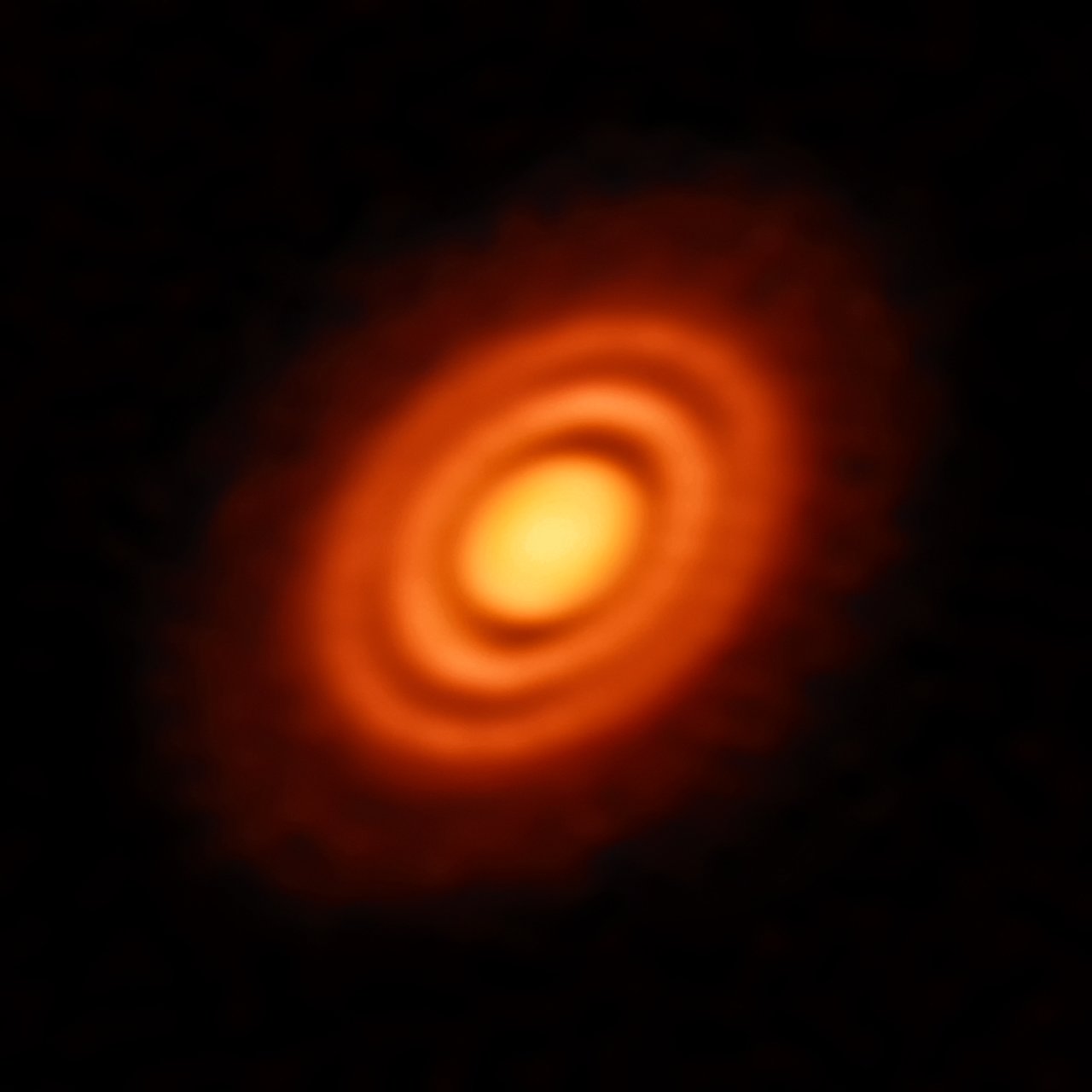The youngest planets in the Milky Way: triplets discovered around baby star
HD 163296, which is 330 light years from Earth, is not an especially spectacular star. It is approximately twice as heavy as our sun, and belongs to the class of Herbig Ae/Be stars. These are very young stars (HD 163296 is 4 million years old) that are still on their way to the main series. Hydrogen fusion has not yet ignited in its interior. Instead, the radiated energy comes from its contraction.
At the end of 2016, the Atacama Large Millimeter/Submillimeter Array (ALMA) discovered a pronounced protoplanetary disk around HD 163296 and by analyzing this disk, two thinner sections were found. Such thinner sections can be produced by emerging planets that slowly clear out the area, but they can also have other causes dependent on the dynamics of the disks.
Now it has become clear that baby planets – actually three – are orbiting HD 163296. Two research teams came to that conclusion independently by analyzing ALMA data. Instead of concentrating on the protoplanetary disk, they focused on the flow of gases in its interior. Carbon monoxide spreads slowly throughout the disk; its motion will be affected by any planets. If such influences are discovered, and ALMA can help in the search with very precise measurements, the existence of planets can be concluded from these influences.
The three planets, which orbit their star at distances of 100, 165, and 260 astronomical units (AU, the distance from the Sun to the Earth), seem to be gas giants. The outermost planet has approximately twice the mass of Jupiter, the two inner planets are 1.3 times and the same mass as Jupiter, respectively. The data suggest the possibility of a fourth planet (at 0.6 the mass of Jupiter) at a distance of 65 AU from its host star – or it could be a disturbance with some other cause.
Our Solar System is hardly comparable to the still-emerging system around HD 163296. The heliosphere, which is dominated by the solar wind in contrast to interstellar space, has a diameter of only approximately 150 AU; the distance of the planet farthest from our Sun, Neptune, is 30 AU. Pluto’s distance is up to 50 AU. The researchers only briefly address whether a gas planet can even be produced at so great a distance in the protoplanetary disk. It’s also possible that the objects migrated from an inner position to a position farther out.

